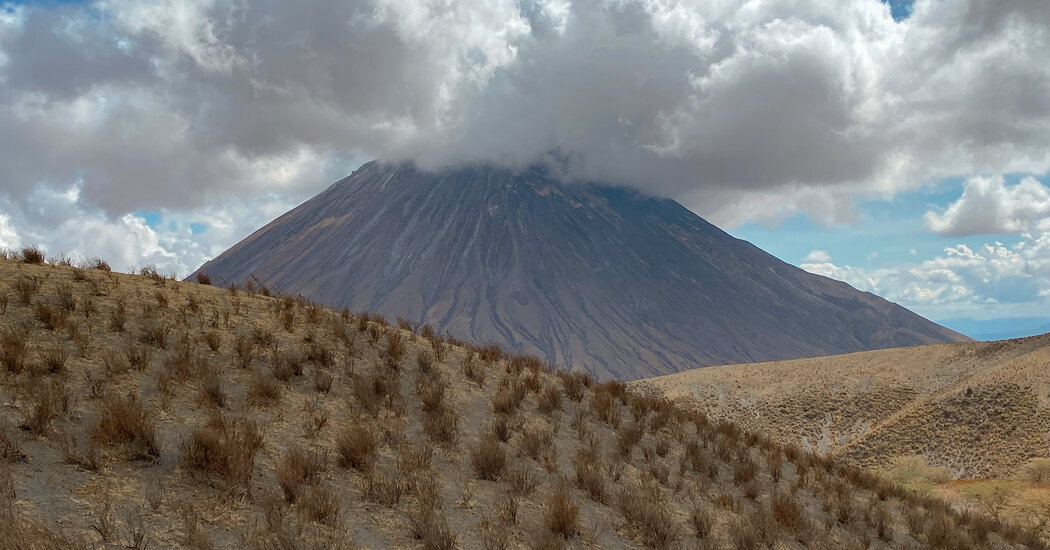Like rumbling thunderclouds or far-off explosions, the muffled booms broke the silence as we reclined on a slope of pulverized lava beads in a small passage near the top of a volcano in East Africa, nearly two miles up into the night sky.
It was 5 a.m., and for six hours we had been scaling the colossal, pyramid-shaped Ol Doinyo Lengai — through waist-high tufts of grass in powdery ash, through loose rock and tight crevices and finally over hardened lava flows so steep I had to climb on all fours. Now we were exhausted, resting inside a fissure with chalky white walls. At sunrise, we would clamber the remaining 15 minutes onto the rim of the crater.
Our bed of gravelly black lapilli was warm, as if heated by an electric blanket. At my knee, a vent in the rock emitted swirls of steamy gas.
“You hear that noise?” my friend Kaixu Yuan asked.
“Yeah, it’s a thunderstorm in the distance,” I reckoned.
“That’s the volcano underground,” Dennis Laiza, our Maasai guide, said.
I was starting to understand what it actually meant to be atop an active volcano.
We were nearing the spectacular climax of our grueling and astonishing weeklong journey through the Crater Highlands of Tanzania. The region sprawls along the East African Rift, where, millions of years ago, separating tectonic plates allowed magma to rise, belching out over many millenniums a multitude of volcanoes, many of them now collapsed calderas or dormant peaks.
The most famous of the mountains is Kilimanjaro, the highest point in Africa (19,340 feet), 100 miles to the east. Kaixu had booked a flight from New York with no set plan and wanted company. I’m not a big fan of snow or thin air, so I searched for an alternative adventure.
I was intrigued by the highlands and selected a mix of experiences: a safari in the Ngorongoro Crater, the world’s largest volcanic caldera, 14 miles wide and said to contain an astounding abundance of wildlife; the Empakaai Crater, nearly four miles across and one of the few in the region filled with a lake; and Ol Doinyo Lengai, the only volcano in the world to emit natrocarbonatite lava — dark gray, relatively cool (about 950 degrees Fahrenheit) and fast-flowing.
I used Instagram to send out requests for guides and chose a relatively new tour operator named Daudi Minde. We settled on a trip that would include two nights camping, a 10-hour trek and four nights in a hotel and lodge, for $1,750 per person.
The tour was poles apart from luxury safaris with furnished…
Click Here to Read the Full Original Article at NYT > Travel…
